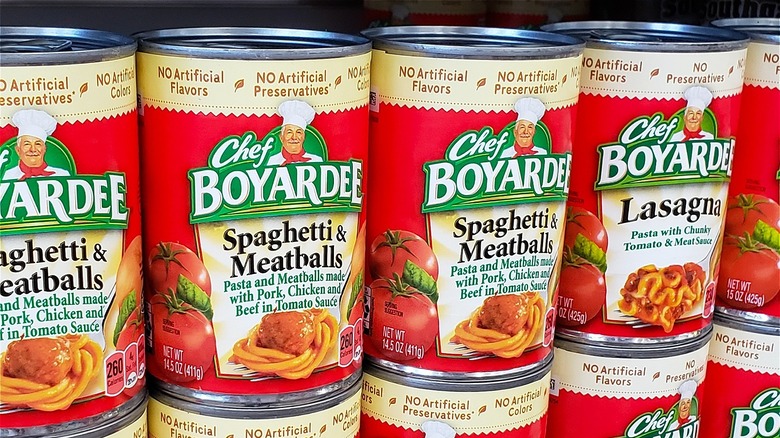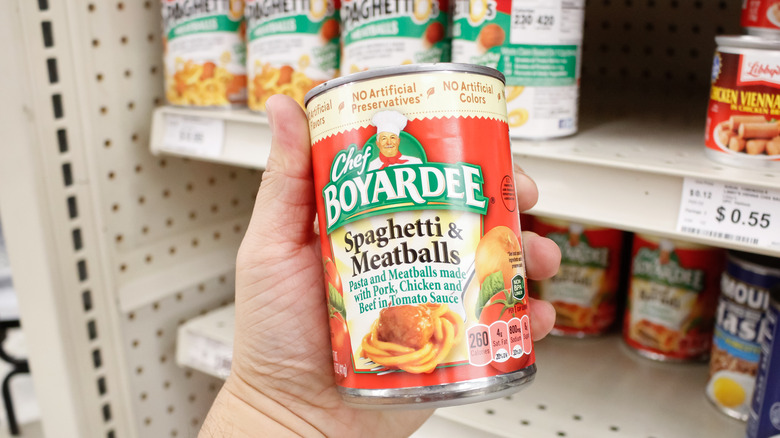The Odd Connection Between Chef Boyardee And Army Rations
By its own admission, the U.S. Army says keeping troops fed has always been a challenge. The Army Historical Foundation reports that back in 1775, the fledgling Second Continental Congress decreed that soldiers were to be given a diet of "meat or salted fish, bread, peas, milk, spruce beer, and rum." But as military campaigns dragged on, soldiers eventually found themselves consuming nothing more than scraps, and as a result, malnutrition eventually killed more men than the Revolutionary War fighting itself.
Provisioning continued to be a challenge during the Civil War. Since the men fighting on both the Union and Confederate sides didn't know how to cook, the United States Sanitary Commission enlisted the help of volunteers to help feed the Union soldiers on the battlefield, per PBS. Still, the quality of the food given to the men continued to be poor, and many were said to have suffered from illness, even dying as a result of unsanitary food.
The ration situation was still dire by the end of the 19th century, when the Spanish American War broke out, according to an article on JSTOR. By this time, canned meat was being offered to soldiers, but the quality was suspect, and many soldiers refused to eat it because they were unhappy with its "pungent" smell and taste. Fortunately for American soldiers, the next major conflict saw an improvement in army rations.
Chef Boyardee fed soldiers during World War II
By the time the United States entered World War I in 1917, "the Army had made noticeable progress" in feeding its troops, says the Army Historical Foundation. Still, it wasn't until two decades later that it dedicated a laboratory to develop ration foods. This lab created tinned meals that could be opened on the field with a key. While the Department of Defense says the cans were first filled with stew, they eventually included spaghetti and meat in tomato sauce — which, you can imagine, is where Hector Boiardi, AKA Chef Boyardee, comes in.
Boiardi and his food products were already known to the American public by 1941, which is when the U.S. entered World War II after the bombing of Pearl Harbor. After all, Boiardi had begun jarring and canning its sauces in 1928 as the Chef Boiardi Food Company, per Food & Wine. By 1936, the company was based in Milton, Pennsylvania, where it could grow and smash its own tomatoes into 250,000 cans of sauce a day.
When World War II broke out, the worlds of Hector Boiardi and the Defense Department collided, as the food company was called upon to make Army rations. The factory operated for 24 hours a day. By the end of the war, it had 5,000 employees, too many for the Boiardis to manage. The family eventually sold the business to American Home Foods (now owned by ConAgra Foods), which Boiardi said was "the only way to ensure that everyone working there would continue to have jobs" (via NPR).

